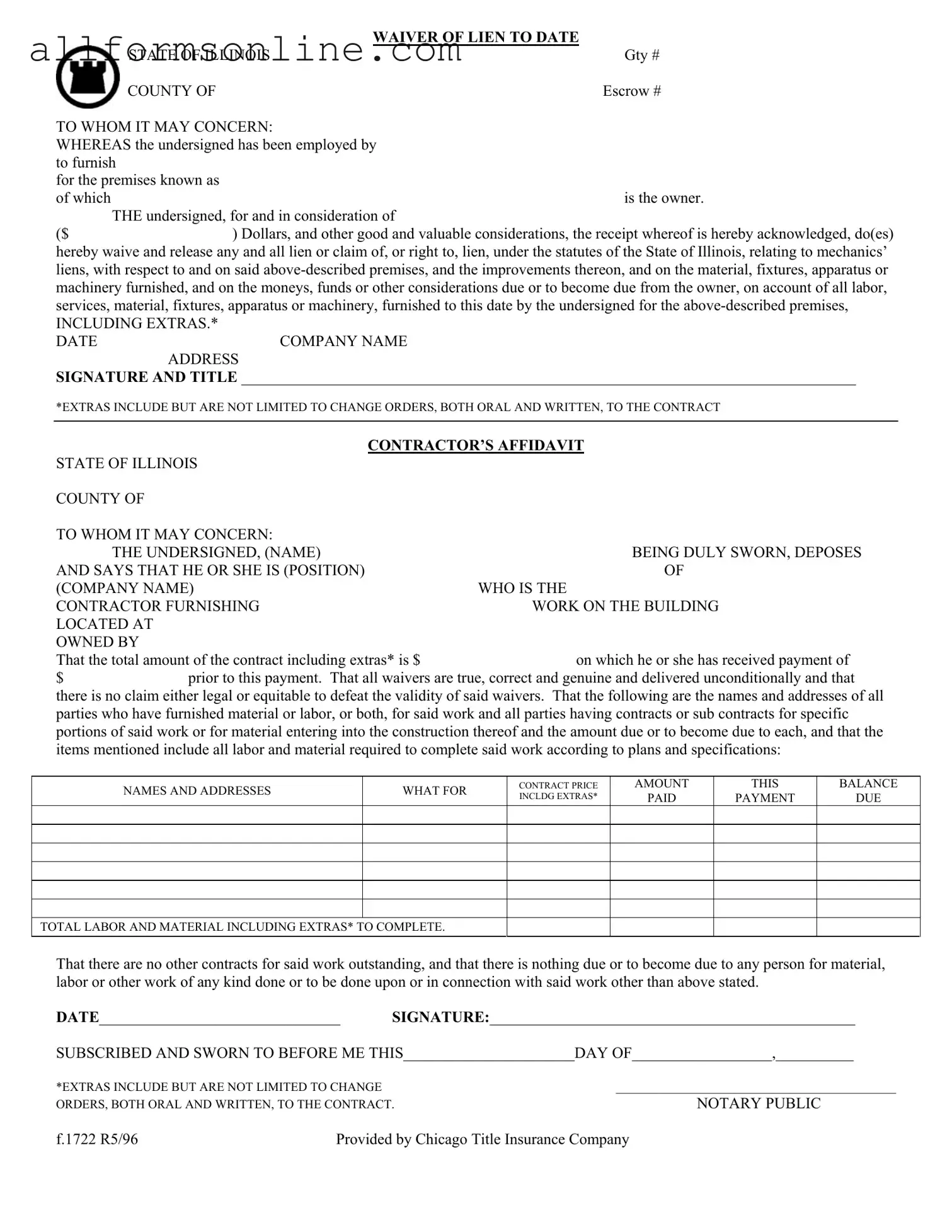What is the purpose of the Chicago Title Waiver Format form?
The Chicago Title Waiver Format form is used to waive any claims or liens related to mechanics' liens for work performed on a property. This document ensures that contractors and subcontractors release their rights to claim payment from the property owner for labor or materials provided, thus protecting the owner from potential lien claims.
Who needs to complete this form?
This form is typically completed by contractors or subcontractors who have provided labor or materials for a construction project. It is important for those who want to formally waive their right to file a lien against the property for unpaid work.
What information is required on the form?
The form requires several key pieces of information, including the name of the contractor, the property address, the total contract amount, and the amount paid to date. Additionally, it must list all parties involved in providing labor or materials, along with the amounts due to each. The contractor's signature and notarization are also necessary for the form to be valid.
What are 'extras' as mentioned in the form?
'Extras' refer to any additional work or materials that were not included in the original contract. This may include change orders, whether they are oral or written. It's essential to account for these extras in the total contract amount to ensure that all parties are aware of the full scope of work performed.
Is notarization required for this form?
Yes, notarization is required. The contractor must sign the form in the presence of a notary public, who will then verify the identity of the signer and provide an official seal. This step adds a layer of authenticity and legal standing to the document.
What happens if the form is not completed properly?
If the form is not completed correctly, it may not be legally binding. Incomplete or inaccurate information can lead to disputes over payments and potentially expose the contractor to claims of unpaid work. It is crucial to ensure all details are filled out accurately before submission.
How does this form protect property owners?
This form protects property owners by ensuring that contractors and subcontractors waive their rights to file liens against the property. By obtaining this waiver, owners can prevent future legal claims related to unpaid work, thus maintaining clear ownership and title to the property.
